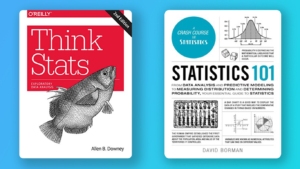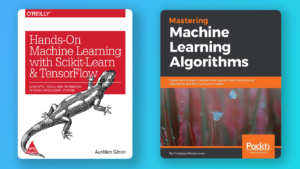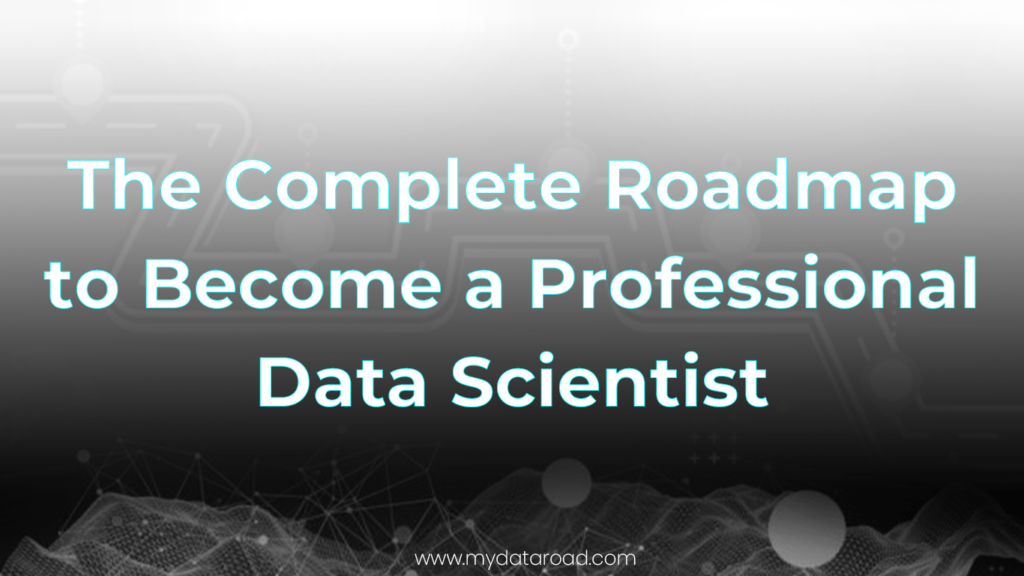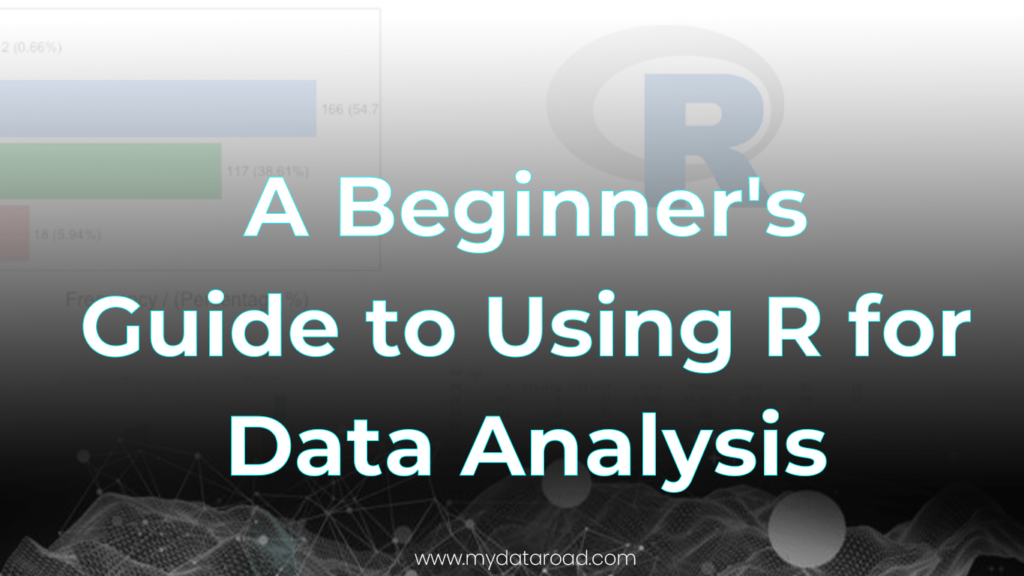The Complete Roadmap to Become a Professional Data Scientist
Are you interested in a high-paying career?
Look no further than Data Science, it is the base of AI.
In today’s world, companies are in dire need of skilled Data Scientists to make better decisions. That’s why we’ve put together the fastest roadmap to help you become a professional in this field.
This roadmap includes all the necessary resources to start your journey to becoming a Professional Data Scientist.
Before we dive in, let’s first discuss why Data Science is so important.
Decisions are now based on data, which means businesses require Data Scientists to make better decisions. And it is a high-paying career, there’s no better time to jump into Data Science than now.
So, let’s get started with the roadmap!
Step 1: Learn Statistics
Statistics is the foundation of Data Science and provides tools to analyze and interpret data. It helps to develop testing models, validate hypotheses, and perform experiments in Data Science. By learning statistics, you will be able to identify trends and patterns in data.
Here are some of the best resources available on the internet to learn statistics for Data Science:

Statistics for Data Science | Probability and Statistics | Statistics Tutorial (visit here)
- This video tutorial covers the basics of probability, descriptive statistics, and inferential statistics. It’s a great starting point for beginners in statistics for Data Science.
Think Stats: Exploratory Data Analysis, Second Edition (get the book)
- This book is a practical guide to exploratory data analysis using Python. It covers the basics of probability, descriptive statistics, and statistical inference.
Statistics 101 (get the book)
- Statistics 101 is a book that covers the basics of probability, descriptive statistics, and inferential statistics. It’s a great resource for beginners who want to learn statistics for Data Science
Step 2: Learn Python for Data Science
Python has become the most popular programming language for data science due to its versatility and the vast array of libraries and packages specifically designed for the field.
Here are some reasons why you should learn Python:
- A large community of contributors: Python has a large and active community of contributors who have developed many useful libraries and packages for data science.
- Versatility: Python is a versatile language that can be used for a variety of data science tasks, from data cleaning to machine learning and deep learning.
- Excellent visualization libraries: Python has excellent visualization libraries such as Matplotlib, Seaborn, and Plotly, which enable you to create beautiful and informative visualizations of your data.
- Data manipulation and analysis libraries: Python has a wide range of data manipulation and analysis libraries, such as Pandas, NumPy, and SciPy, which enable you to efficiently clean, transform, and model your data.
If you’re new to Python, don’t worry. There are plenty of resources available to help you learn Python for data science.
Here are some of the best ones:

- Python for Data Science | edX
- Learn Python the Hard Way | Zed A. Shaw
- Think Python: How to Think Like a Computer Scientist |
By mastering Python for data science, you’ll be equipped with the skills and tools you need to succeed in this exciting and rapidly growing field.
Step 3: Learn Specific Python Libraries for Data Science
What are those libraries and how you can learn faster? There are 1000s of Python libraries, so we need to know which one we should give priority.
To learn specific Python libraries for Data Science,
Start with the following libraries:
- NumPy: a fundamental library that provides support for large, multi-dimensional arrays and matrices, along with a large collection of high-level mathematical functions.
- Pandas: a library built on top of NumPy that provides data manipulation and analysis tools for Python.
- Matplotlib: a plotting library that provides a wide range of static, animated, and interactive visualizations in Python.
- Scikit-learn: a library for machine learning that provides simple and efficient tools for data mining and data analysis.
- TensorFlow: a library for numerical computation and large-scale machine learning that provides a wide range of tools and resources for building and deploying models.
- Keras: a high-level neural networks API, written in Python and capable of running on top of TensorFlow, CNTK, or Theano.
- PyTorch: an open-source machine learning library for Python, based on Torch, that provides a wide range of tools and resources for building and deploying machine learning models.
To learn these libraries faster, there are several resources available online, including video tutorials, blogs, and documentation. Some popular resources include the official documentation of each library, online courses, and YouTube channels dedicated to Data Science and Machine Learning.
Step 4: Learn Machine Learning
Machine learning is a crucial aspect of data science that enables us to develop predictive models and uncover valuable insights from data. It leverages complex algorithms to identify patterns and relationships in large datasets that would be challenging to identify manually.
Machine learning can be applied to a variety of domains, including
- Image recognition
- Natural language processing
- Fraud detection
- Recommendation systems
It is also a key component of artificial intelligence, and it plays a vital role in building intelligent systems that can learn from data and improve their performance over time.
Best resources on the internet to learn Machine Learning:

1. Hands-On Machine Learning with Scikit-Learn, Keras, & TensorFlow, 2nd Edition |
2. Mastering Machine Learning Algorithms – Second Edition | Giuseppe Bonaccorso
2. Machine Learning Crash Course with TensorFlow APIs | Course link
Step 5: Learn Essential Data Science Tools
Data scientists need to be proficient in essential tools for working with data and solving business problems.
Here are the essential tools that you need to learn:
- Microsoft Excel: It is used for data cleaning, manipulation, and analysis.
- SQL: It is used for querying and manipulating large datasets stored in databases.
- Tableau/Power BI: They are powerful visualization tools that help you create interactive dashboards and reports.
- Jupyter Notebook: It is an open-source web application that allows you to create and share documents that contain live code, equations, visualizations, and narrative text.
- Cloud Platforms: You need to learn cloud platforms such as Amazon Web Services (AWS), Microsoft Azure, and Google Cloud Platform (GCP) to be able to store and process large datasets in the cloud.
Final Step: Work on Projects
Working on projects is the most crucial step to becoming a professional data scientist.
It allows you to apply what you’ve learned to real-world scenarios, develop problem-solving skills, and gain hands-on experience.
Never stop after reading a book. Never stop after watching a tutorial. You may think it is easy, you can do it, you have understood it. But you are actually not.
Here are some ideas Project ideas:
- Predicting Housing Prices: This project involves building a model that predicts the price of a house based on various factors such as the location, square footage, number of bedrooms, and so on. You would need to gather data, clean and preprocess it, and then use machine learning algorithms such as linear regression or decision trees to build a model that can accurately predict house prices.
- Customer Segmentation: In this project, you would cluster customers based on their purchasing behavior and demographic information. This could help identify target markets for specific products or services. You would need to gather and preprocess customer data, and then use clustering algorithms such as k-means or hierarchical clustering to group customers based on their similarities.
- Image Recognition: Developing an image recognition model involves training a machine learning algorithm to recognize objects or people in images. This project requires a lot of data, and you would need to preprocess the images to ensure that they are in a suitable format for training the algorithm. Popular algorithms for image recognition include convolutional neural networks (CNNs).
- Time Series Analysis: Time series analysis involves analyzing data that changes over time, such as stock prices or website traffic. In this project, you would need to gather and preprocess the data, and then use techniques such as autoregressive integrated moving average (ARIMA) or seasonal decomposition of time series (STL) to identify trends and make predictions about future behavior. This could be useful for predicting stock prices or forecasting website traffic.
What you should know:
- Our Mission is to Help you to Become a Professional Data Analyst.
- This Website is a Home for Data Analysts. Get our latest in-depth Data Analysis and Artificial Intelligence Lessons and Updates in your Inbox.

Tech Writer | Data Analyst | Digital Creator



